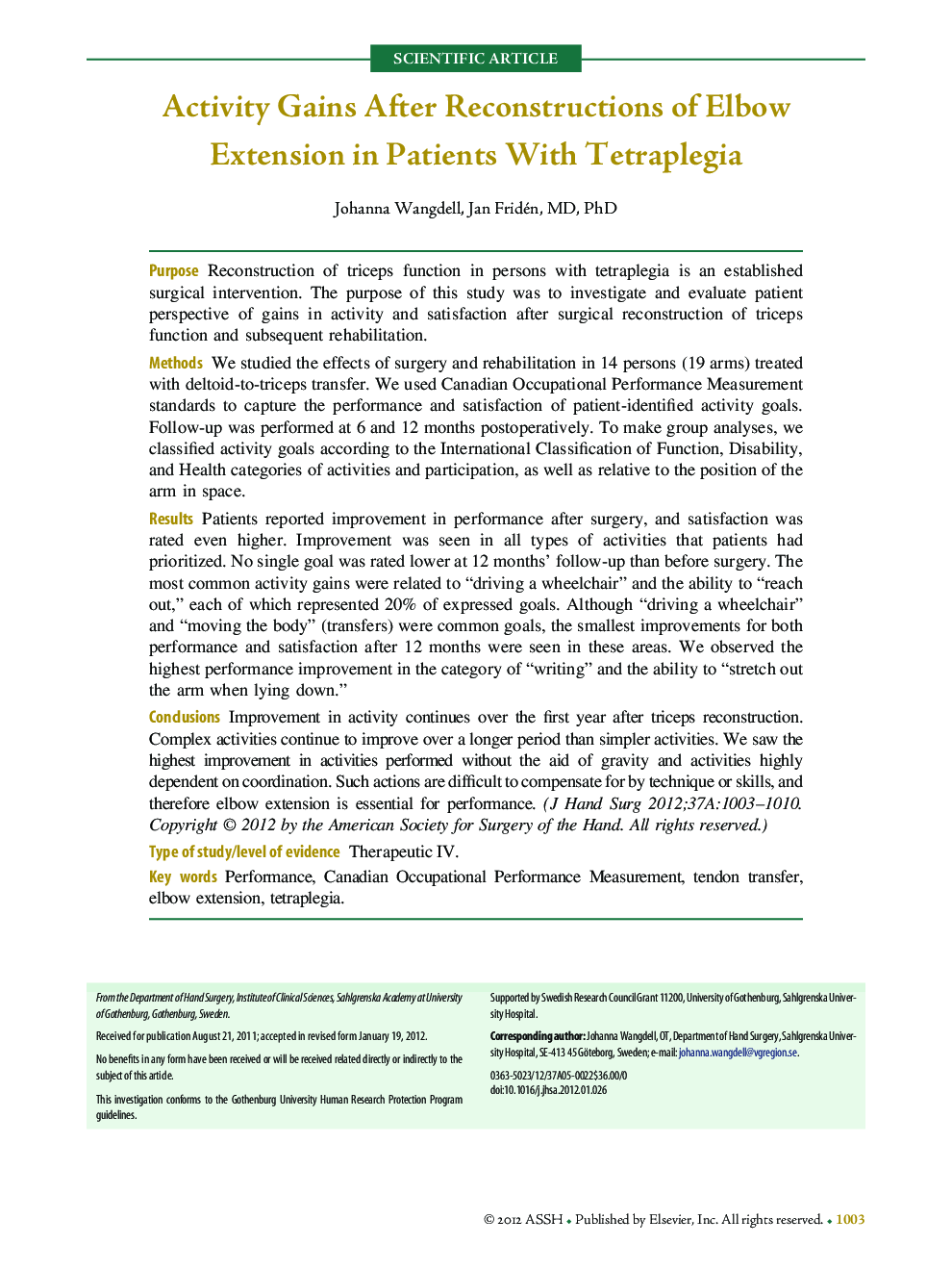| Article ID | Journal | Published Year | Pages | File Type |
|---|---|---|---|---|
| 4068986 | The Journal of Hand Surgery | 2012 | 8 Pages |
PurposeReconstruction of triceps function in persons with tetraplegia is an established surgical intervention. The purpose of this study was to investigate and evaluate patient perspective of gains in activity and satisfaction after surgical reconstruction of triceps function and subsequent rehabilitation.MethodsWe studied the effects of surgery and rehabilitation in 14 persons (19 arms) treated with deltoid-to-triceps transfer. We used Canadian Occupational Performance Measurement standards to capture the performance and satisfaction of patient-identified activity goals. Follow-up was performed at 6 and 12 months postoperatively. To make group analyses, we classified activity goals according to the International Classification of Function, Disability, and Health categories of activities and participation, as well as relative to the position of the arm in space.ResultsPatients reported improvement in performance after surgery, and satisfaction was rated even higher. Improvement was seen in all types of activities that patients had prioritized. No single goal was rated lower at 12 months' follow-up than before surgery. The most common activity gains were related to “driving a wheelchair” and the ability to “reach out,” each of which represented 20% of expressed goals. Although “driving a wheelchair” and “moving the body” (transfers) were common goals, the smallest improvements for both performance and satisfaction after 12 months were seen in these areas. We observed the highest performance improvement in the category of “writing” and the ability to “stretch out the arm when lying down.”ConclusionsImprovement in activity continues over the first year after triceps reconstruction. Complex activities continue to improve over a longer period than simpler activities. We saw the highest improvement in activities performed without the aid of gravity and activities highly dependent on coordination. Such actions are difficult to compensate for by technique or skills, and therefore elbow extension is essential for performance.Type of study/level of evidenceTherapeutic IV.
